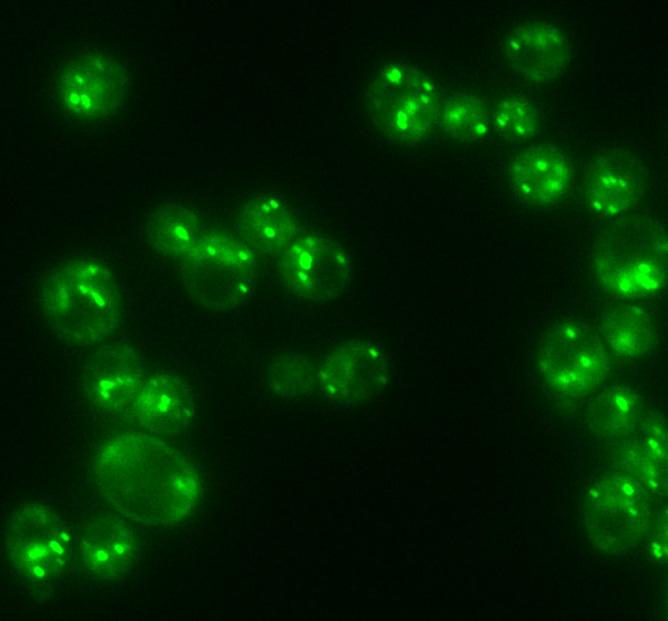The tight regulation of lipid production within cells could be critical in the development of diseases such as obesity, diabetes, and even cancer. The enzyme phosphatidic acid phosphatase (PAP) has been known for decades to have a critical function in regulating the amount of fat in the human body. Yet now, scientists at Rutgers University-New Brunswick have found that abrogation of the enzyme entirely could increase the risk of cancer, inflammation, and a host of other aberrant cellular processes. The findings were published recently in the Journal of Biological Chemistry in an article entitled “Yeast PAH1-Encoded Phosphatidate Phosphatase Controls the Expression of CHO1-Encoded Phosphatidylserine Synthase for Membrane Phospholipid Synthesis.”
“The goal of our lab is to understand how we can tweak and control this enzyme,” explained senior study investigator George Carman, Ph.D., professor in the School of Environmental and Biological Sciences at Rutgers. “For years, we have been trying to find out how to fine-tune the enzyme's activity so it's not too active, and creating too much fat, but it's active enough to keep the body healthy.”
The PAP enzyme was discovered in 1957, with the corresponding gene that encodes the protein being identified in 2006. Through years of painstaking research, scientists have discovered that PAP determines whether the body's phosphatidic acid will be used to create fat or create the lipids in cell membranes. In the current study, the investigators used the model organism Saccharomyces cerevisiae (baker’s yeast) to determine the effects of completely ablating the gene, and subsequently the enzyme’s activity, on lipid accumulation.
“…we examined the PAP-mediated regulation of CHO1-encoded phosphatidylserine synthase (PSS), which catalyzes the committed step in the synthesis of major phospholipids via the CDP [cytidine diphosphate]–diacylglycerol pathway,” the authors wrote. “The lack of PAP in the pah1Δ mutant highly elevated PSS activity, exhibiting a growth-dependent upregulation from the exponential to the stationary phase of growth. Immunoblot analysis showed that the elevation of PSS activity results from an increase in the level of the enzyme encoded by CHO1.”
The investigators continued, adding that “truncation analysis and site-directed mutagenesis of the CHO1 promoter indicated that Cho1 expression in the pah1Δ mutant is induced through the inositol-sensitive upstream activation sequence (UASINO), a cis-acting element for the phosphatidate-controlled Henry (Ino2–Ino4/Opi1) regulatory circuit. The abrogation of Cho1 induction and PSS activity by a CHO1 UASINO mutation suppressed pah1Δ effects on lipid synthesis, nuclear/endoplasmic reticulum membrane morphology, and lipid droplet formation, but not on growth at elevated temperature. Loss of the DGK1-encoded diacylglycerol kinase, which converts diacylglycerol to phosphatidate, partially suppressed the pah1Δ-mediated induction of Cho1 and PSS activity. Collectively, these data showed that PAP activity controls the expression of PSS for membrane phospholipid synthesis.”
Since the discovery of the gene that encodes the PAP enzyme, researchers around the globe have studied the enzyme because of its relation to obesity, lipodystrophy, inflammation, diabetes, and other conditions.
“We have found that maybe a more critical role for the enzyme is to make sure that cells are not making too much membrane lipid,” Dr. Carman said. “If you make too much membrane lipid, you make too much membrane, and the cells are permitted to grow uncontrollably, a condition characteristic of cancer.”
Currently, the Rutgers scientists have been trying to understand the enzyme's structure and function. The next step is to figure out how to control it. “The key take-home message is that things have to be balanced,” Dr. Carman concluded. “To keep the balance between making storage fat and membrane lipid, you have to have balanced diet.”


